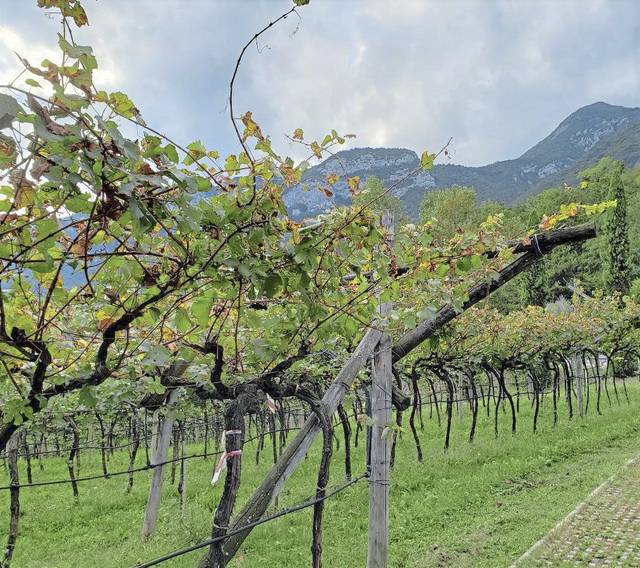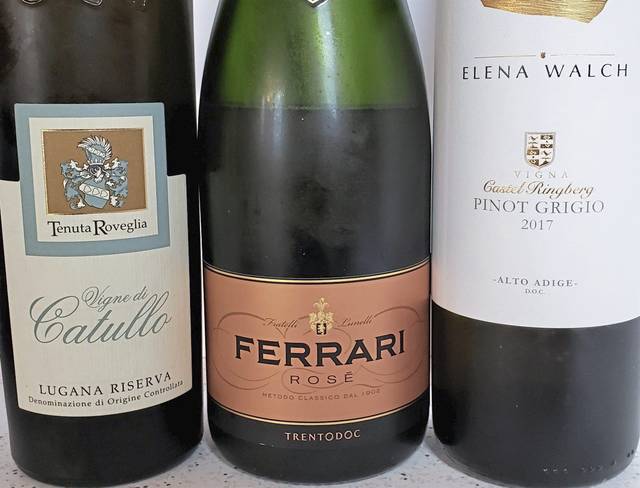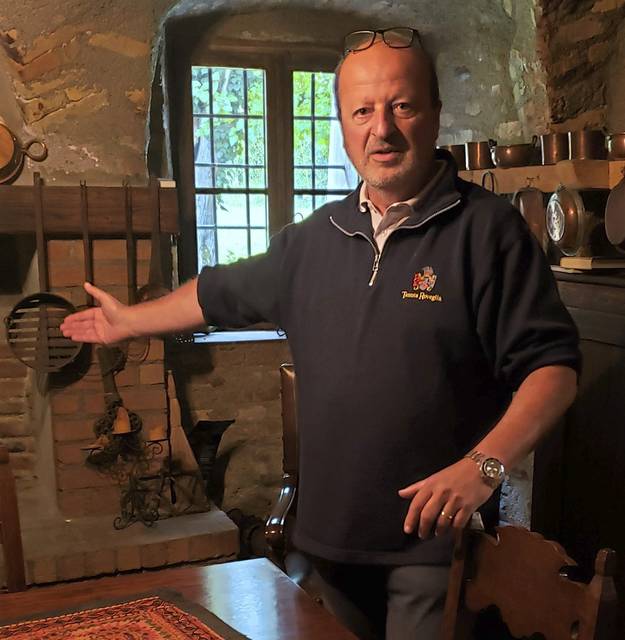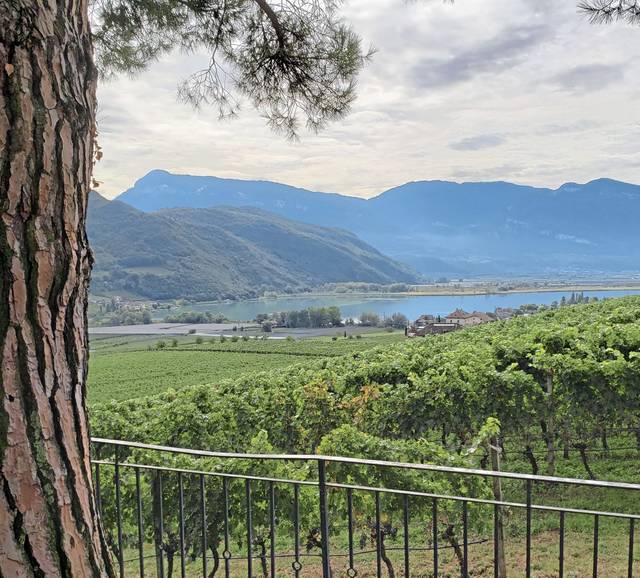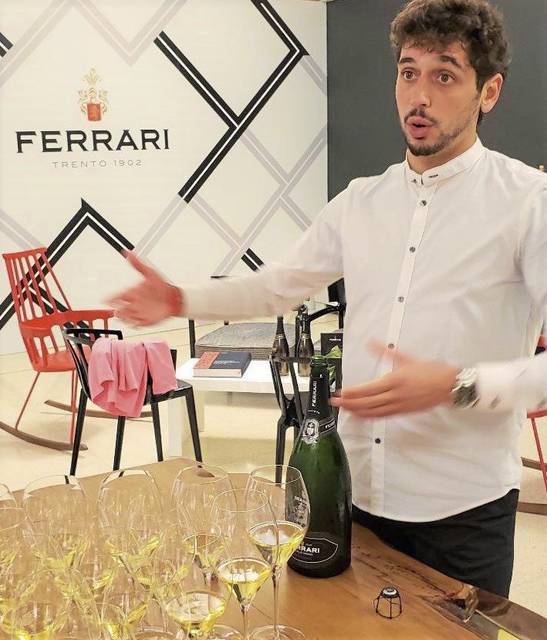The Wine Cellar: An insider's peek at Northern Italy's wineries
It’s a privilege to visit vineyards during the hectic harvest season. Seeing ripening grapes hanging heavily on the vines provides a thrill and creates an appreciation for the hard work required to produce a tasty bottle of wine. A recent tour of three leading northern Italian wineries proved the point.
Tenuta Roveglia, Lugana
Lying east of Milan and just west of Verona, Lake Garda’s striking blue waters and dramatic mountain attract visitors from around the globe. This large glacial lake offers plentiful freshwater fish that pair perfectly with well-balanced white wines.
The Lugana wine district on Lake Garda’s southern shore offers ideal conditions for producing just such wines. Tenuta Roveglia has nearly 250 acres of vineyards as the region’s largest producer.
“Lugana has shallow soils covering white clay and limestone, and this is very important for creating mineral freshness and savory flavors in our wines,” says Paolo Fabiani, Tenuta Roveglia’s veteran winemaker and manager. “Minerality in the wine cleans the palate.”
The region’s interplay of cold northern winds and warm southern winds, he says, also shape Lugana’s high quality white wines.
The winery’s Turbiana grapes ripen slowly and evenly to balance subtle floral aromas, lush ripeness and uplifting freshness. Tenuta Roveglio also maintains old vines averaging over 40 years old, Fabiano says. The mature vines sink deep roots while producing lower yields of flavorful, concentrated fruit. A small legion of harvest workers picks the fruit by hand over a long eight-week stretch.
Most of the grapes go toward producing dry white table wines with varying degrees of aging in wooden casks. Fermentation occurs in a new modern facility while the aging casks rest in a charming 15th-century farmstead building. The Zweifel family, Tenuta Roveglio’s owners, meticulously maintains the older sections.
Try the 2014 Tenuta Roveglia, Lugana Riserva “Vigne di Catullo,” Italy (Luxury 75855; $23.99). Fermentation in temperature-controlled stainless tanks captured the fruit’s delicate personality. The wine’s golden color offers fresh citrus and floral notes followed by ripe peach and pineapple flavors. Fresh acidity lifts the wine, while aging in older barrels added a little complexity and touch of pleasant creaminess in the fruity, but dry finish. Highly Recommended.
Ferrari, Trentodoc
Traveling north from Lake Garda toward the medieval city of Trento, the sparkling wine producer, Ferrari, occupies an inconspicuous, low-slung building not far off the autostrada highway. Visitors encounter an intriguing water sculpture outside just before entering Ferrari’s elegant modern tasting room.
Here the tale begins with the legendary Guilio Ferrari. A native of Trento, in 1902 he set out to make world-class sparkling wines from fruit grown in the surrounding mountainous region. He used the labor-intensive, time-consuming method of creating secondary fermentation in the bottle, the same technique used in Champagne, France. Ferrari also transplanted Chardonnay vines with the aim of producing Trento’s own version of sparkling wines with frothy elegance, subtle aromas and delicious flavors.
Over the next 50 years, his handcrafted wines earned accolades throughout Italy and Europe. Without children to step up, in 1952 Ferrari chose Bruno Lunelli, a Trento wine shop owner, to carry on the vision. The entrepreneurial Lunelli expanded production significantly while maintaining Ferrari’s meticulous, uncompromising standards.
Now Ferrari represents Italy’s best-selling sparkling wine with exports to 52 countries. The firm produces 5.5 million bottles annually, yet quality remains a first priority, according to Davide Iori with Ferrari’s international communications team.
“Ferrari owns over 250 acres of organically certified vineyards, and we work with nearly 450 individual growers who have another 1,750 acres of vines,” Iori points out. “The growers must accept our quality rules for growing the grapes as raw materials, otherwise we cannot produce the quality of wines that we offer. It requires extra work in the vineyards, so we pay them more for their grapes.”
After an initial fermentation to create the “base” wine, the time comes to create the frothy effervescence. This occurs by adding yeast and sugar in each bottle for a secondary fermentation. The process occurs over a minimum of 24 months while the bottles rest in racks. This gives the wine aromatic complexity and silky, creamy texture.
Try the delicious N.V. Ferrari Rosé, Trentodoc, Italy (Luxury 76252; $35.99). Made from Pinot Noir and Chardonnay, the wine has brilliant coppery color and persistent bubbles. Aromas of strawberries and currants open to red fruit and subtle citrus flavors. Bright acidity lifts the frothy, delicately balanced body through a fruity, yet elegant, dry finish. Highly Recommended.
Elena Walch, Alto Adige/Südtirol
Further north toward Italy’s border with Austria, Elena Walch left an architectural career to make high quality wines. She reduced yields from the vines while highlighting the terroir of distinct individual vineyards including Castel Ringberg.
The vineyard takes its name from the Habsburg family’s Renaissance-era castle built there in 1620. On a recent sunny autumn afternoon, the spectacular view of Lake Caldaro and surrounding vines cast a peaceful spell.
Aside from the setting’s beauty, Castel Ringberg’s variety of soils and elevations allow planting of diverse white and red-skinned grapes, according to Rafael Palaoro, one of Walch’s marketing assistants. A mix of gravels, moraine glacial rocks and limestone gives power and freshness to white wines. Meanwhile, plentiful sunshine fully ripens the fruit to create the opportunity to make terrific wines.
Try the 2017 Elena Walch, Pinot Grigio, “Vigna” Castel Ringberg, Alto Adige/Südtirol, Italy (Luxury 76294; $24.99). The wine’s white floral aromas mix with light herbal hints. Ripe pear and citrus flavors follow balanced with zesty acidity and subtle creamy notes. The elegant dry finish lingers with fresh fruitiness. Highly Recommended.
Remove the ads from your TribLIVE reading experience but still support the journalists who create the content with TribLIVE Ad-Free.

